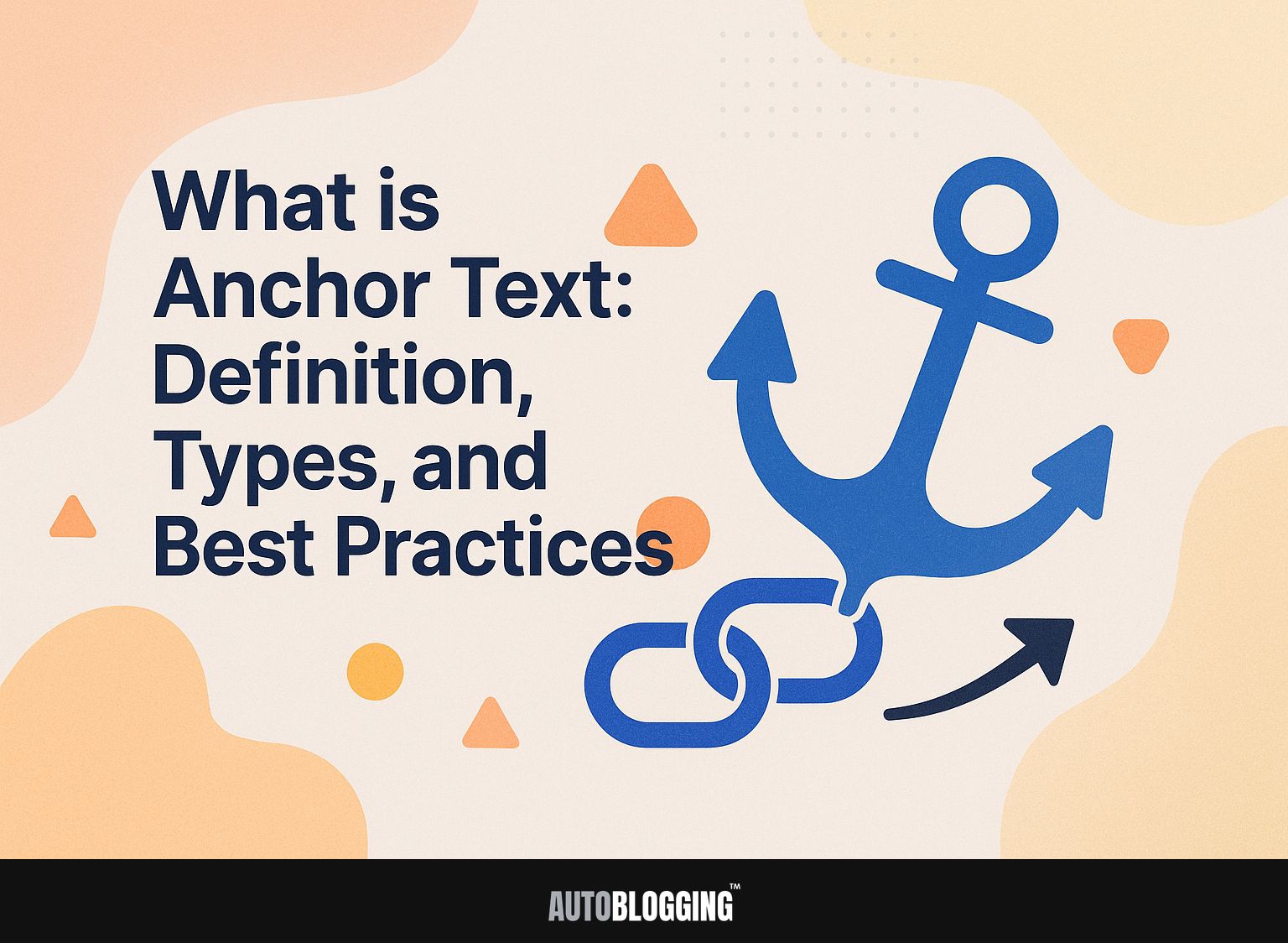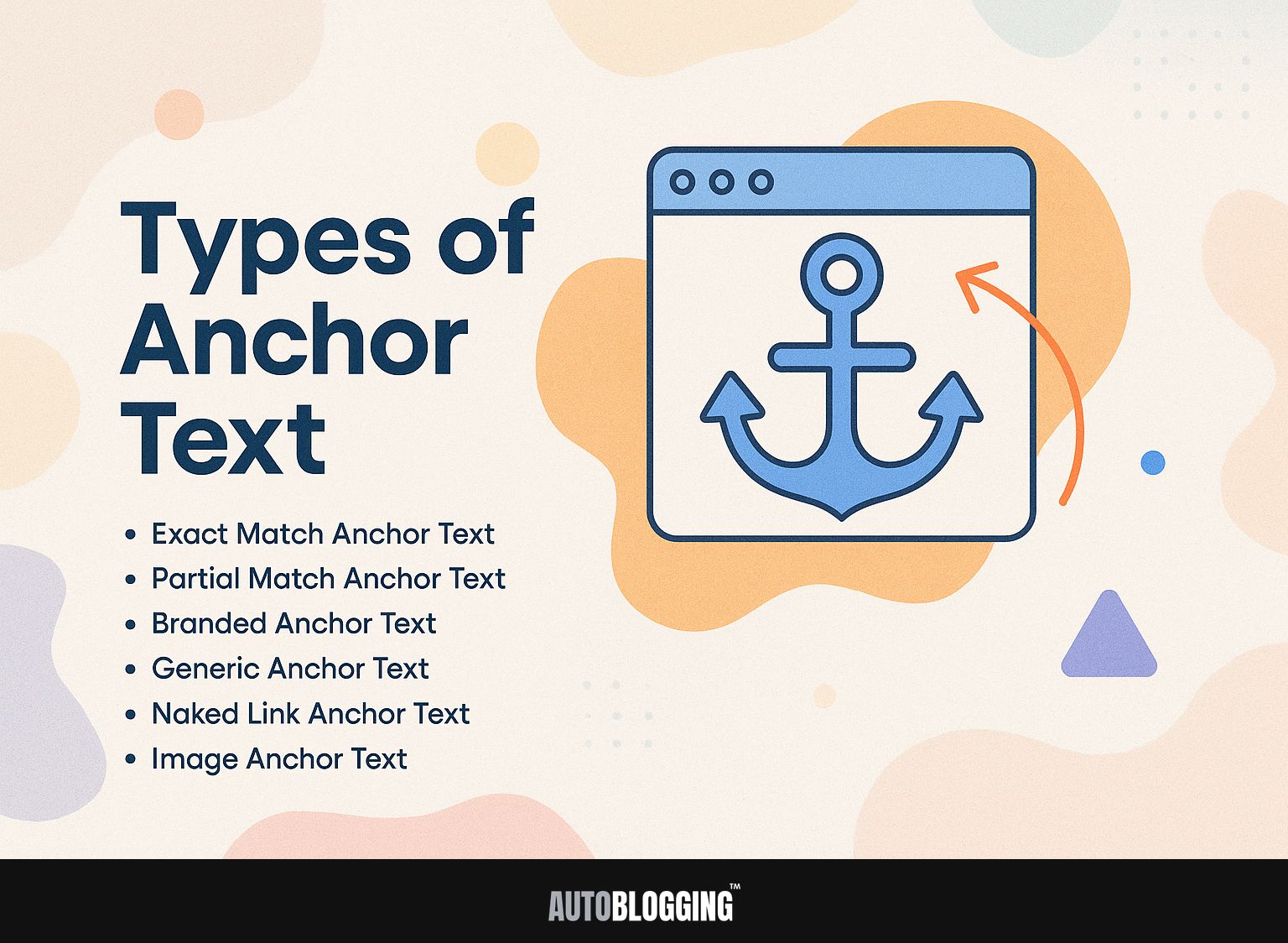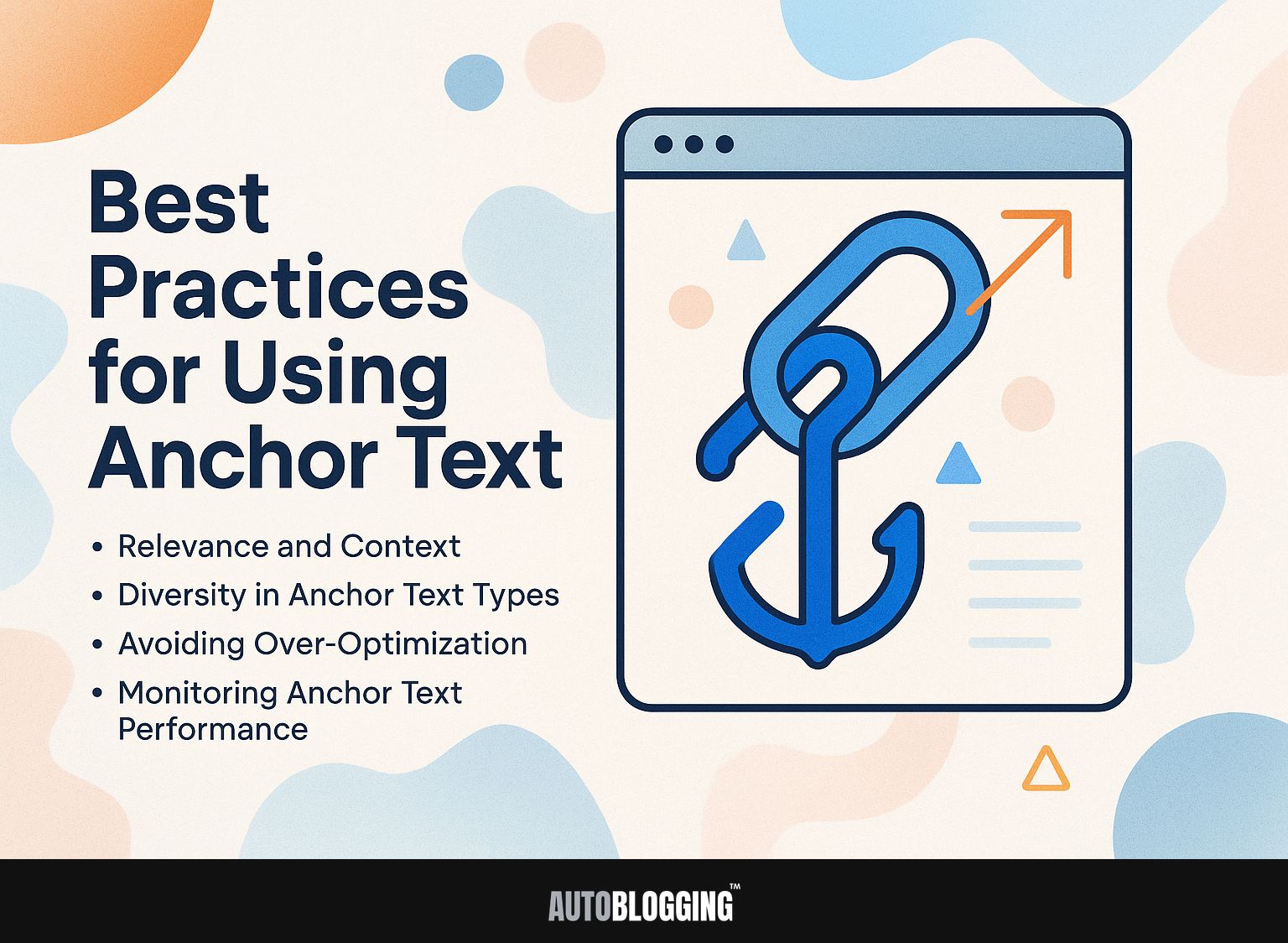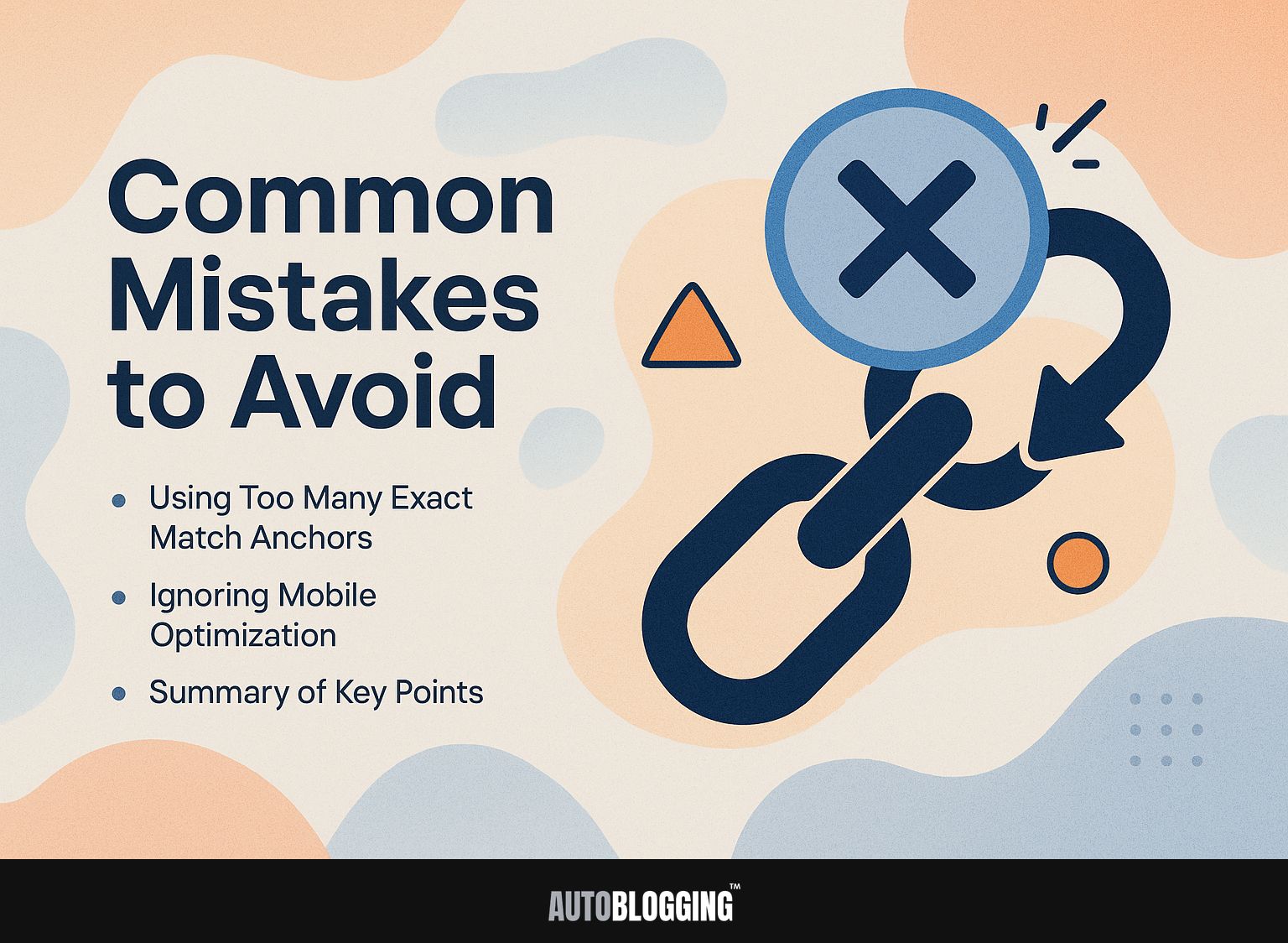
Anchor text is an important part of an SEO plan, affecting how search engines like Google judge your site. Google Penguin updates highlight the importance of anchor text for building quality links and helping users move through websites. This article discusses what anchor text is, its different forms, and effective ways to use it. It looks into tools like Moz Link Explorer to improve your strategy and increase your website’s presence online.
Key Takeaways:
- Anchor text is important in SEO because it helps search engines figure out what a webpage is about and how relevant it is.
- Anchor text comes in various forms such as exact match, partial match, and branded text. Each type helps improve a website’s performance.
- When using anchor text, it is important to maintain relevance and context, diversity in types, and avoid over-optimization to achieve the best results in SEO.
Contents
1. Importance of Anchor Text in SEO
Using the right anchor text can improve your site’s authority and how easily it is found, as it helps search engines determine how content relates to your topic.
To use anchor text well, concentrate on three main approaches.
- First, use descriptive and relevant keywords that reflect the linked content. For example, instead of using “click here,” opt for “best SEO practices” when linking to that specific content.
- Second, diversify your anchor text; including branded, generic, and exact match links can create a natural backlink profile. Related insight: What is Domain Authority (DA): Definition, How It’s Calculated, and How to Improve It.
- Regularly audit your links. Tools such as Ahrefs or SEMrush can find links that are not doing well, letting you improve or swap them for improved outcomes.
2. Overview of Anchor Text Usage
Using anchor text correctly makes it easier for people to move around a website and can improve search rankings. Effective anchor text usage provides clarity and relevance, directly benefiting SEO.
For example, a website that links to a thorough guide on digital marketing using the anchor text “digital marketing strategies” improves keyword relevance. In contrast, vague anchors like “click here” offer no context and can hurt SEO performance, as they don’t signal to search engines what the linked content entails.
Tools like SEMrush or Ahrefs can help check the variety of your anchor text, providing a balanced way to support user movement and improve search visibility.
Definition of Anchor Text
Anchor text is the clickable words in a link, affecting how users move through a website and how search engines rank the page. This approach has significant implications for content strategy- our guide on link building strategies demonstrates the practical application.
1. What Constitutes Anchor Text?
Anchor text generally consists of concise, descriptive text that conveys the link’s destination, facilitating better keyword density.
Effective anchor text improves user experience and SEO. For instance, ‘click here’ is vague and unhelpful.
Instead, use descriptive phrases like ‘best gardening tips’ when linking to a gardening blog. This method tells users about the destination and helps search engines grasp the content’s meaning.
To make the most of anchor text, choose words that fit the content of the linked page and the text around it, ensuring it reads smoothly and improves keyword significance. Avoid keyword stuffing; prioritize clarity over excessive optimization.
2. How Anchor Text Works
Search engines use anchor text when scanning to understand connections between linked pages.
The words you choose for a hyperlink are important for SEO. For instance, if a link to a page uses the anchor text “best running shoes,” search engines will associate that page with running shoes, influencing its ranking for related queries.
Semantic connections are important too; using different terms like “best sports shoes” improves how we understand the context. Tools such as Moz or Ahrefs can check the variety and importance of anchor text, helping you improve your linking approach.
Types of Anchor Text
Different kinds of anchor text are used for specific reasons and affect SEO and user experience in different ways.

1. Exact Match Anchor Text
Exact match anchor text includes the exact keyword phrase that the linked page wants to rank for, which can sometimes lead to penalties.
For effective use, consider incorporating exact match anchor text in strategic locations, such as within high-quality guest posts or your own blog content.
Linking `best running shoes’ in a detailed article on footwear can make the content more relevant. Use a balanced mix of brand-specific and relevant anchor texts to minimize the chance of penalties.
Tools like Semrush can check your link profile and make sure your links are varied, so you don’t depend too much on exact match phrases while still getting SEO advantages.
2. Partial Match Anchor Text
Partial match anchor text includes variations of the target keyword, helping to build a diverse link profile without over-optimization. This approach maintains SEO strength by indicating relevancy while reducing the risk of penalties from search engines for overusing exact match links.
For instance, if your target keyword is “running shoes,” you might use phrases like “best shoes for running” or “affordable running footwear.”
Tools like Ahrefs or SEMrush can help analyze your backlink profile, ensuring a healthy mix of anchor texts. By routinely checking this information, you can change your plans for upcoming content, helping to keep your SEO practices ongoing.
3. Branded Anchor Text
Branded anchor text uses the brand name, increasing brand visibility and helping improve domain authority.
Successful examples include using phrases like “Learn more about XYZ Corp’s services” or “Visit ABC Inc. for premium solutions.” These build trust and increase click-through rates.
Tools like Moz and SEMrush can analyze anchor text effectiveness, helping brands adjust their strategy. Incorporating branded anchor text in guest posts or partnerships strengthens recognition.
With continued use, brands notice better search rankings and more user interaction, creating a dedicated audience.
4. Generic Anchor Text
Generic anchor text like ‘click here’ or ‘read more’ lacks specificity but can still play a role in guiding users.
Although these phrases are simple, they lack background information, which makes it hard for users to judge if the content matters to them. To make it easier for users, use text that clearly describes linked content, such as ‘check out our pricing plans’ or ‘read the latest blog post on SEO trends.’
Tools like Yoast SEO can help analyze anchor text for relevance. Using specific anchor text improves readability and improves SEO results, guiding users to relevant content.
5. Naked Link Anchor Text
Showing the full URL as the anchor text can sometimes be confusing, but it is important for clarity. Using plain links can build trust in link-building, especially in guest posts or online forums where trust is important.
For instance, if you share a resource on a reputable site, including the full URL can reassure readers of its legitimacy.
Tools like Bitly or TinyURL let you make shorter links without losing credibility. However, use them carefully. When writing academic papers, using simple links makes it easy for readers to locate the source.
6. Image Anchor Text
Image anchor text uses the alt text feature to explain the link’s purpose, affecting both search engine rankings and how easily users can access the content.
Effective alt text should be descriptive, concise, and relevant to the image’s context. Instead of naming a file with something unclear like “image1.jpg,” use a clear and specific name like “golden retriever playing fetch in a park.” This makes it easier for screen readers and helps search engines understand the content of the page.
Tools like Google’s Search Console can help analyze how well your alt text is performing. Regularly check and refresh alt text to keep it in line with your SEO plan.
Best Practices for Using Anchor Text
Using effective techniques for anchor text can strengthen links and improve SEO results. To delve further into related strategies, consider exploring our insights on link building strategies, benefits, and best practices that complement anchor text usage effectively.

1. Relevance and Context
Accurate anchor text helps with SEO and makes it easier for users to find their way around. To achieve this, start by reviewing the destination page to confirm that it matches the anchor text.
For instance, if the anchor text reads “Diversity in SEO strategies,” the linked page should directly discuss various SEO methods.
Use tools like Screaming Frog to analyze your existing backlinks for relevance. Check your content often to make sure older links still point to helpful and correct resources. Following this approach makes your site more user-friendly and increases trust in search engine results.
2. Diversity in Anchor Text Types
A diverse anchor text strategy helps mitigate the risks associated with over-optimization while strengthening the link profile.
To implement this strategy effectively, consider using a mix of anchor text types. For example, use exact match anchors for targeted keywords, like “best running shoes,” along with partial matches such as “top-rated running footwear.”
Branded anchors, such as your company’s name, build recognition and trust, while generic anchors like “click here” maintain natural flow.
Tools like SEMrush and Ahrefs can help examine your current link profile, showing you how to make changes for a more varied anchor text and better SEO results.
3. Avoiding Over-Optimization
It’s important to avoid using too many keywords in anchor text to prevent penalties from Google and other search engines.
Strategies to maintain a healthy balance include using different types of anchor text and using phrases that fit the surrounding content. Instead of always using exact match anchors, try incorporating partial matches, branded terms, or generic phrases like ‘click here’ or ‘learn more.’
For example, if your target keyword is ‘best running shoes,’ alternate between phrases like ‘top running footwear’ and ‘high-quality sneakers’ to diversify your link profile.
Using tools like SEMrush or Ahrefs can help you analyze your anchor text distribution, ensuring you’re not overly reliant on a single keyword.
4. Monitoring Anchor Text Performance
Keeping an eye on anchor text results helps make quick changes that improve SEO.
To begin monitoring anchor text, use tools like Moz Link Explorer and Ahrefs. These platforms show which keywords and phrases are creating backlinks.
For instance, Moz allows you to view the distribution of your anchor texts and identify opportunities for optimization, while Ahrefs offers a detailed analysis of external links pointing to your site.
Set aside time weekly to review these metrics, focusing on high-performing anchor texts for further backlink generation and addressing any underperforming ones to improve SEO outcomes.
Common Mistakes to Avoid
Finding typical errors in using anchor text can greatly improve SEO and the user’s experience. To enhance your understanding of this topic, explore our insights on internal link strategies and best practices.

1. Using Too Many Exact Match Anchors
Over-relying on exact match anchor text can trigger penalties from search engines, diminishing link effectiveness.
Websites like eBay and BMW have faced penalties due to overuse of exact match anchors, leading to drops in search rankings.
To avoid this, diversify your anchor text by incorporating branded, generic, and long-tail keywords. For instance, instead of always linking with “buy running shoes,” alternate with phrases like “premium athletic footwear” or simply “running shoes from Brand X.”
Tools like Moz’s Keyword Explorer can help identify helpful keywords, while Ahrefs can review your existing backlinks to confirm they appear authentic.
2. Ignoring Mobile Optimization
Neglecting mobile optimization of anchor text can lead to poor user experience and loss of mobile traffic.
To make sure your anchor text works well on mobile devices, concentrate on three main strategies.
- First, use bigger font sizes for links, at least 16 pixels, to make them easier to read.
- Second, increase the touch target size to 44×44 pixels, ensuring that users can easily tap without misclicks.
- Maintain clear and descriptive anchor text, avoiding vague phrases like ‘click here.’ Instead, use specific terms relevant to the content, such as ‘learn about our services.’
Implementing these best practices will significantly improve user engagement on mobile devices.
3. Summary of Key Points
Key points include the importance of relevance, diversity, and monitoring in maintaining effective anchor text.
To keep your anchor text useful, frequently check your linking plan. Aim for a diverse range of keywords for your anchors, such as `best SEO practices’ or `content marketing tips.’
Use tools like Ahrefs or SEMrush to keep track of link performance and change strategies based on SEO trends. Consider implementing a spreadsheet to track anchor text diversity over time, ensuring no single term is overused.
By combining these methods, you can make your site more trustworthy and simple for users to use.
4. Final Thoughts on Anchor Text
Continuously refining anchor text strategies will lead to improved visibility and higher authority in search engine results.
To make your anchor text strategy better, use a variety of text and make sure it is relevant to the content.
Start by researching keywords that align closely with your content using tools like Google Keyword Planner and SEMrush. Implement a balanced approach, mixing exact match, partial match, and branded anchors.
For instance, if your site is about pet care, you might use “best dog food” for exact match, “top pet nutrition tips” for partial match, and your brand name for branded links.
Regularly checking your internal links and anchor texts helps keep them useful as algorithms change.
Additional Resources
To learn more about anchor text and SEO, there are many helpful resources you can access.
- Start with Moz’s “Beginner’s Guide to SEO” for a broad overview, which covers anchor text relevance.
- Google Search Central provides detailed advice on effective linking, emphasizing the importance of using anchor texts that contain relevant keywords.
- Consider reading articles from Ahrefs that discuss the impact of anchor text on rankings, providing examples of effective strategies.
- These resources show you how to make your website’s links better, helping your site rank higher in search results and keep visitors engaged.
Frequently Asked Questions
1. What is Anchor Text?
Anchor text is the part of a link that you can click on to go to another webpage or resource. It is usually underlined and appears in a different color than the surrounding text.
2. What is the Definition of Anchor Text?
The definition of anchor text is the visible text that is used to hyperlink to another webpage or resource. It is important for search engine optimization and plays a significant role in determining the relevance and ranking of a webpage.
3. What are the Types of Anchor Text?
There are different kinds of anchor text, such as exact match, partial match, branded, generic, and naked URLs. Exact match anchor text uses the exact keyword or phrase being linked, while partial match includes similar or related words. Branded anchor text includes the brand name, generic is a general phrase, and naked URLs are simply the URL of the webpage being linked.
4. What are the Best Practices for Anchor Text?
The best practices for anchor text include using relevant and descriptive text, avoiding spammy or keyword-stuffed text, varying the anchor text for different links, and using a mix of types of anchor text. Make sure the anchor text can be clicked and links to a relevant, high-quality webpage.
5. Why is Anchor Text Important for SEO?
Anchor text is important for SEO because it helps search engines understand the context and relevance of a webpage. It also helps search engines crawl and index webpages more effectively, as well as determine the popularity and authority of a webpage based on the quality and relevance of the anchor text used to link to it.
6. How Can I Improve my Anchor Text Strategy?
To improve your anchor text strategy, you can do keyword research to find relevant and effective keywords to use in your anchor text. You can look at your existing anchor text and change it to make sure it is diverse and fits the content. You can also keep an eye on how your anchor text is doing to find out which styles and words are most effective for your site.
